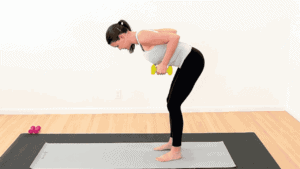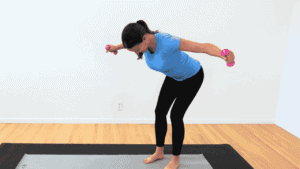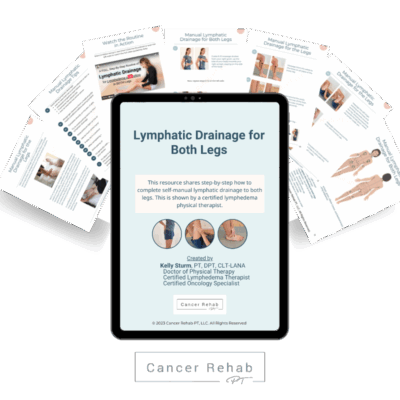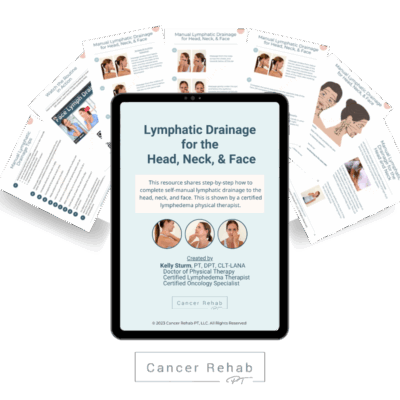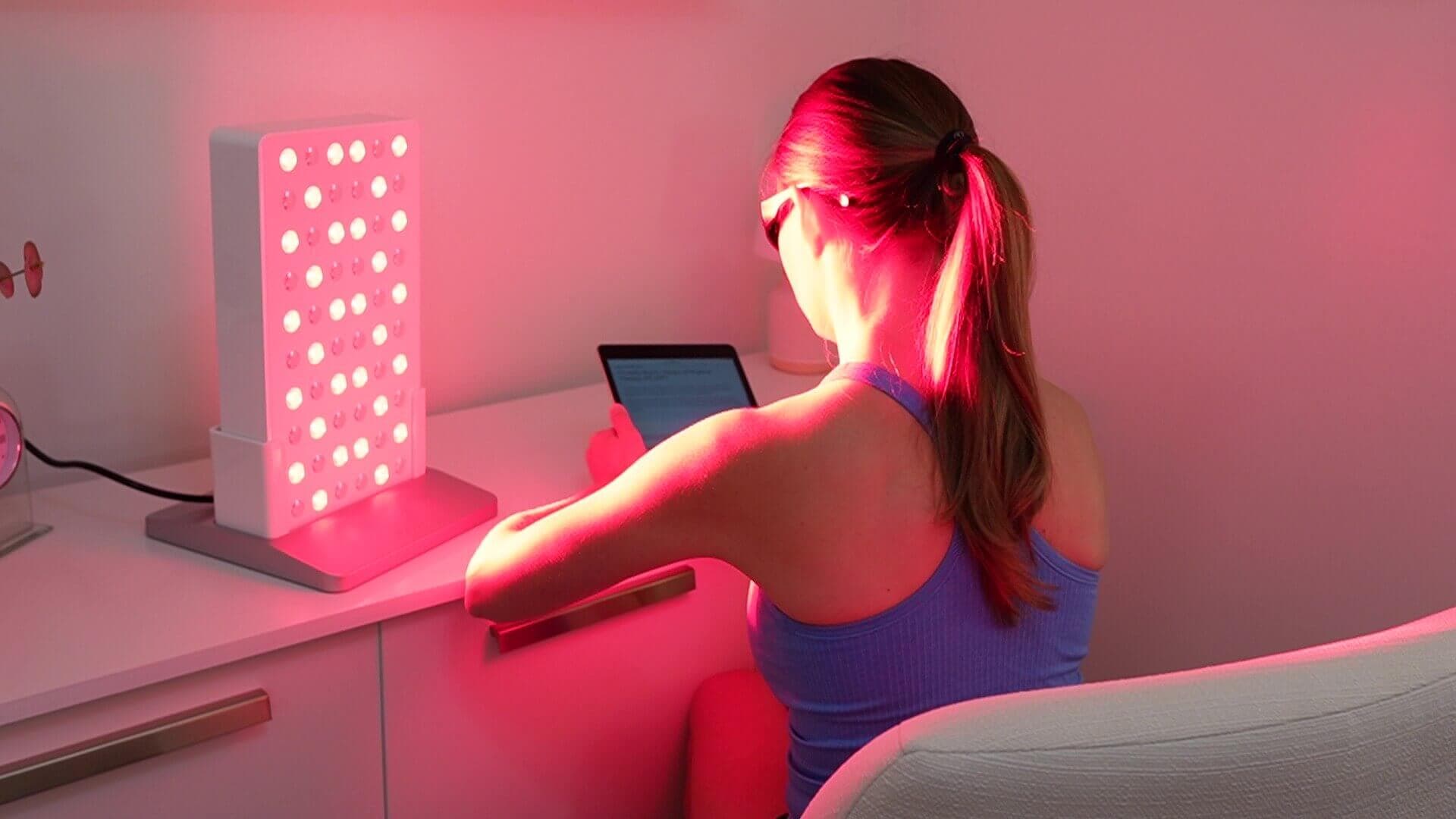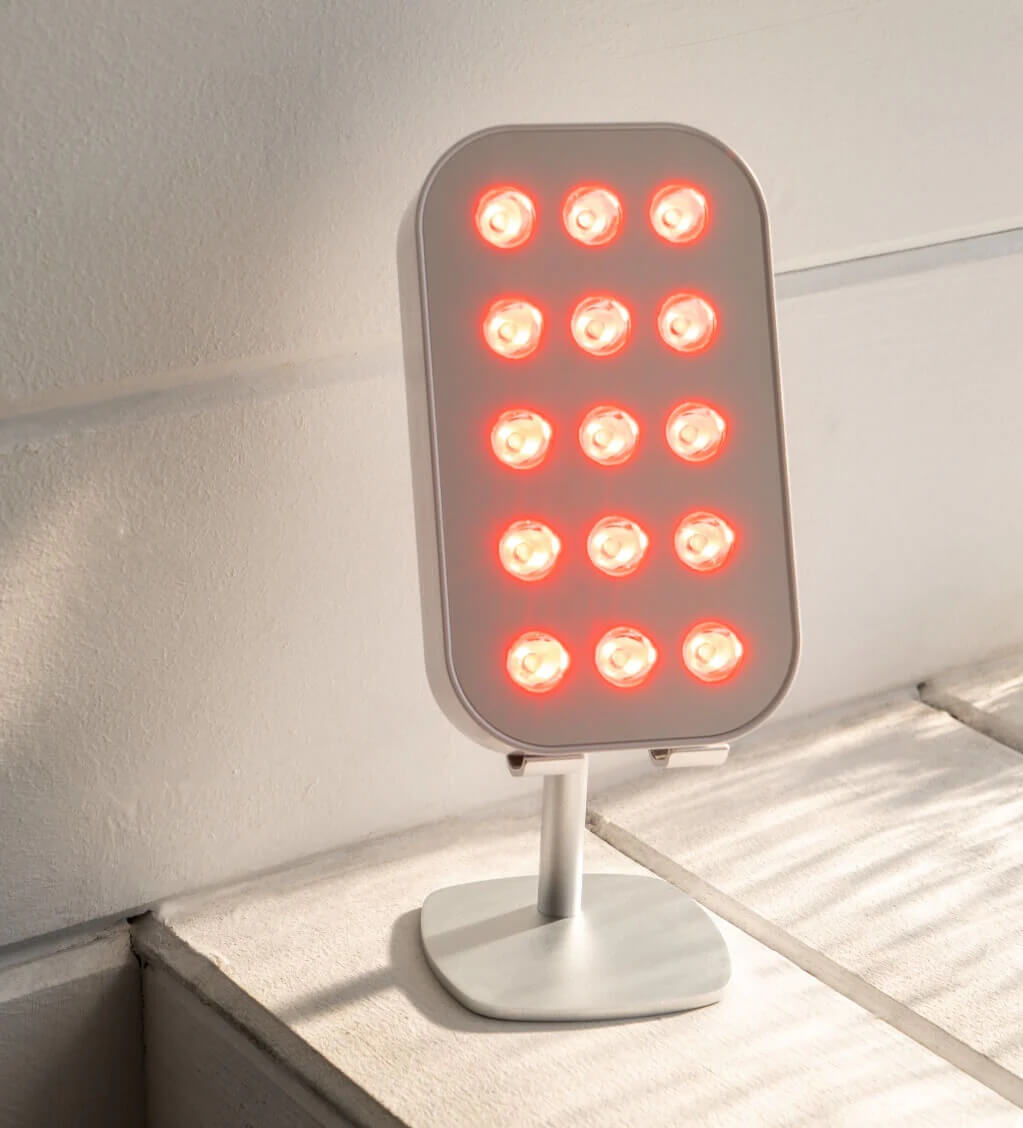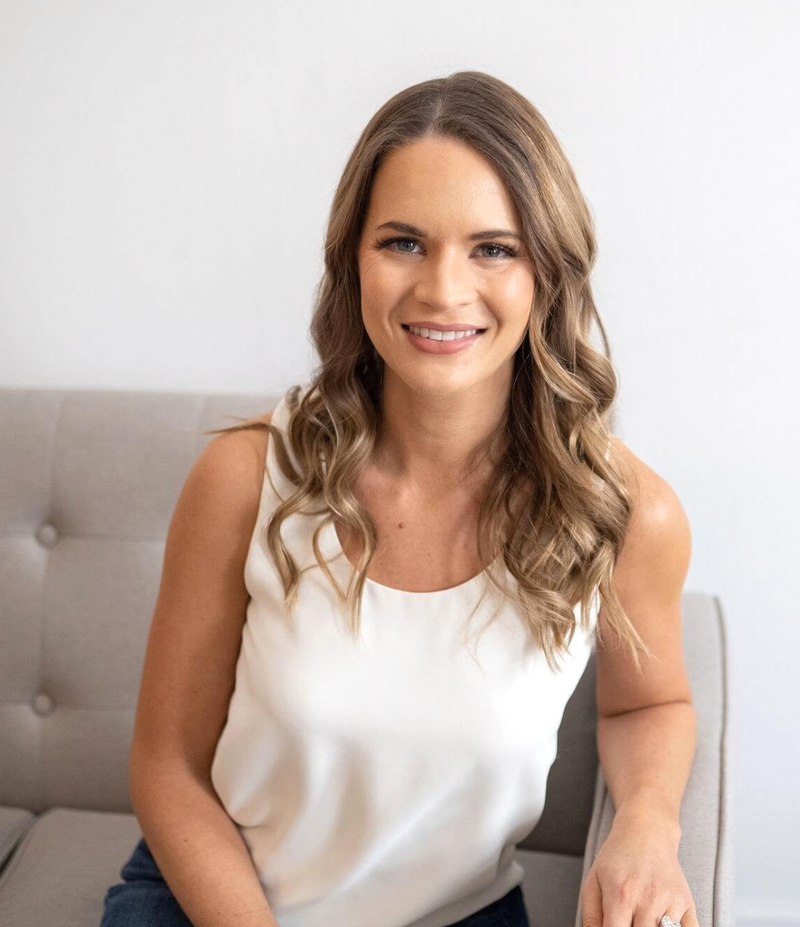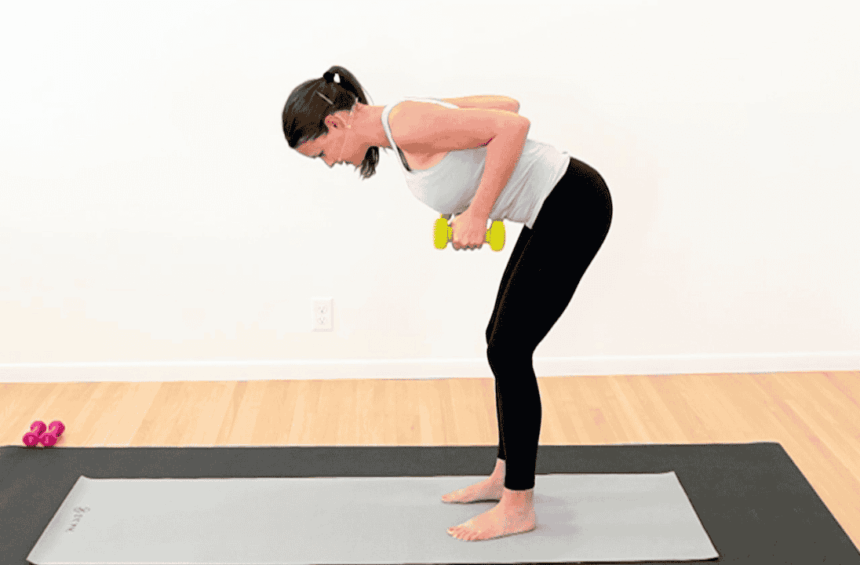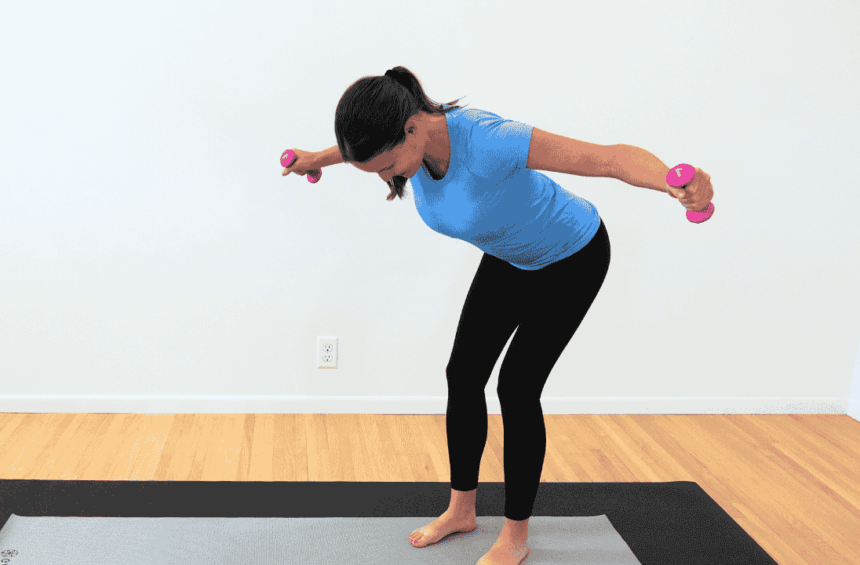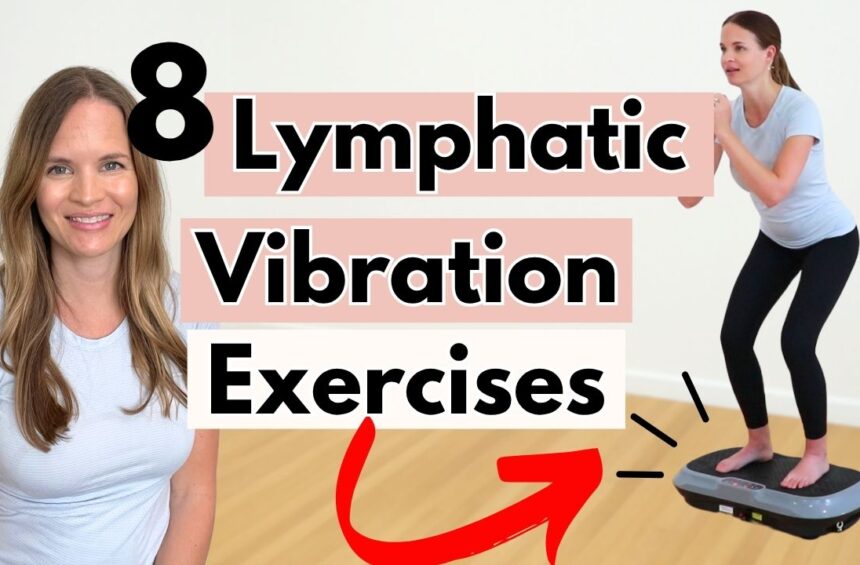You’ve probably seen red light therapy everywhere—social media ads, wellness influencers, maybe even your doctor’s office. But does it actually help your lymphatic system with lymphatic drainage, or is it just another wellness trend?
I’m Kelly, a physical therapist and certified lymphedema therapist who specializes in the lymphatic system. I’ve been using light-based therapies in clinic for years to support patients recovering from chronic swelling and pain.
So when red light therapy devices started popping up on social media promising lymphatic benefits, I knew I needed to take a closer look. Are these at-home red light therapy devices effective for lymphatic drainage and conditions like lymphedema or lipedema—or are they more skincare trend than science?
Let’s break it down. I’ll walk you through what the research says, what I actually use with patients, and what’s worth trying at home.
How Red Light Helps Your Lymphatic System
Here’s how I explain it to my patients: Red light therapy—also called photobiomodulation if you want to get technical—uses specific wavelengths of light to give your cells an energy boost.
It’s been studied for improving blood flow, reducing inflammation, pain management, and tissue repair.
Two main types of light do the work:
- Red light (around 660nm): Works on your superficial lymph vessels, right under the skin
- Near-infrared light (830-905nm): Penetrates deeper to reach muscles, lymph vessels, and connective tissue
What’s actually happening in your body:
- Your lymphatic vessels dilate and move fluid better – like opening up clogged pipes
- Inflammation decreases – red light helps downregulate inflammatory markers that make lymphatic congestion worse
- Circulation improves – enhanced microcirculation supports better oxygen and nutrient delivery to tissues
- Cellular energy increases – red light boosts ATP production, which makes your lymphatic vessels contract more effectively
The anti-inflammatory effects are huge too. When inflammation goes down, your lymphatic system can work more efficiently. Plus, the improved circulation helps with tissue healing and recovery.

The Research Is Actually Pretty Good
Here’s what studies show: 93% of breast cancer patients with arm lymphedema saw a 16-22% reduction in swelling after red light therapy treatments. They also had better grip strength and less shoulder tightness—two big issues I see every week in my clinic.
Another study found that just two rounds of red light therapy helped improve tissue softness and reduce swelling for people with long-term lymphedema—and the benefits lasted three months.
Rehab therapists use red light therapy to treat chronic pain, joint pain, wound healing, and for recovery from injuries.
So this isn’t just wellness hype. There’s real science showing red light can help your lymphatic system work better. But here’s the catch: most research was done with medical-grade devices (low-level lasers) in clinical settings. These are not the same as the red light panels you buy online.
Home vs. Clinic Devices: What You Should Know
Let me show you the real difference between what we use in clinic and what you can get at home—because understanding this will help you make way better decisions.
In my clinic, I use devices like the Multi Radiance Super Pulsed Laser. These are medical-grade lasers that cost $5,000-$30,000. They’re FDA-cleared for therapeutic use and can penetrate much deeper than anything you can buy for home use. I use these for post-surgical scar tissue, axillary cording, fibrosis, and deep swelling that just won’t budge.
Home devices use LED lights instead of medical lasers and work more on superficial layers of skin and tissue. While they don’t penetrate as deeply, they still help enhance lymphatic drainage, support skin healing, and relieve mild to moderate swelling when used consistently.
For safety reasons, they’re not quite as strong, but they can still be effective when used consistently and correctly—I’ve seen patients get good results with them.
Here’s the breakdown:
Clinic lasers:
- Wavelengths: 905-950nm (focused near-infrared)
- Power: Over 100 mW/cm² (pulsed)
- Treatment time: 3-6 minutes per zone
- Depth: Superficial to deep tissue
- Cost: $5,000-$30,000+
- Best for: Serious conditions, post-surgical complications, severe fibrosis
Home LED panels:
- Wavelengths: 620-830nm (red to near-infrared)
- Power: 20-100 mW/cm²
- Treatment time: 10-20 minutes
- Depth: Superficial to moderate tissue
- Cost: $250-$1,600
- Best for: Maintenance, mild to moderate swelling, daily use

Both help your lymphatic system work better—the difference is how deep they penetrate and how quickly you’ll see results. Most home devices put out 30-50 mW/cm², while clinic lasers deliver over 100 mW/cm² in pulsed format—that’s significantly more powerful.
Cost-wise, many lymphatic clinics don’t even have these devices because of the price tag. If they do, you’ll need to factor in healthcare costs and insurance coverage.
So when do you need clinic-level treatment versus when home devices work great? That depends on your specific condition and how severe it is.
My Top Recommendations for Red Light Therapy Home Use
If you’re looking for at-home options for lymphatic health, here are the things to look for and some options I’ve found that are the closest to clinic red light therapy.
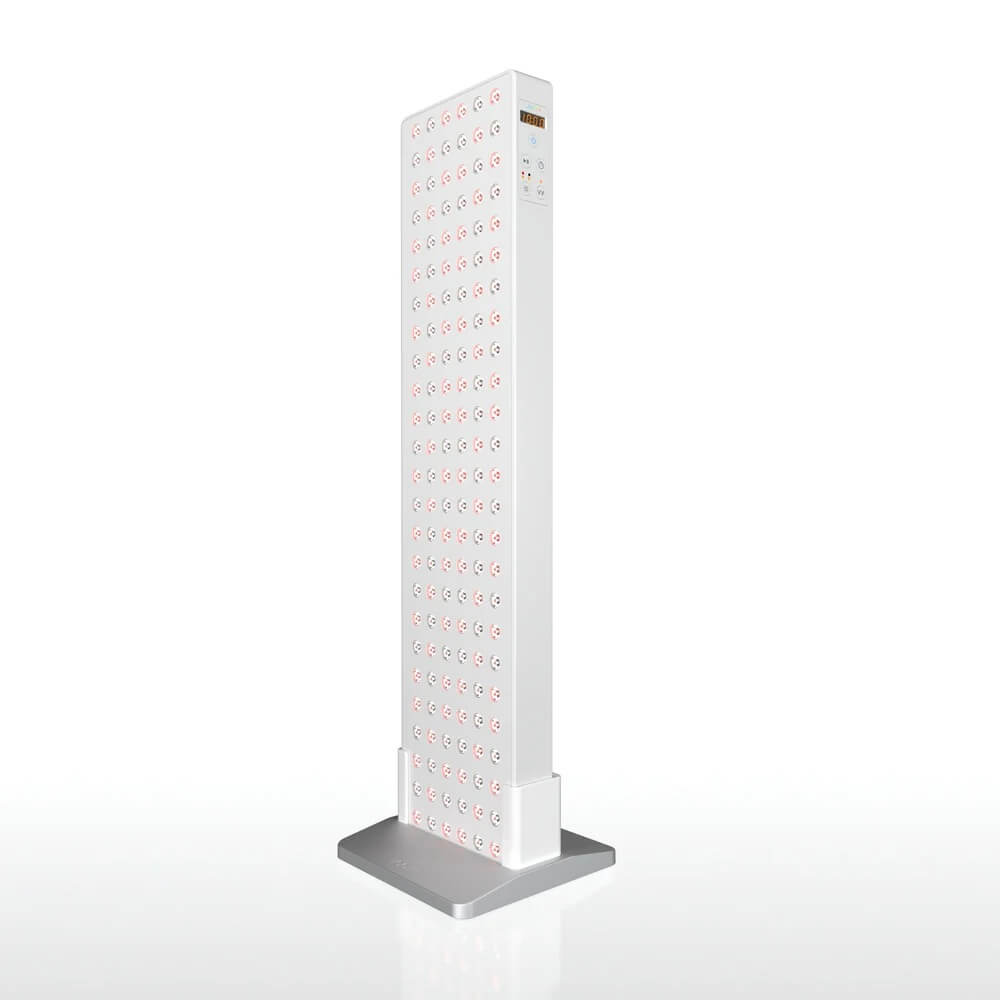
Joovv 3.0
⭐⭐⭐⭐⭐
Best For Full-Body Treatment
💲 Price Range: $649-$1,699
⭐ Best For: Full-body lymphatic support, arms, legs, abdomen. People who want medical-grade quality at home
This is the closest thing to medical-grade I’ve found for home use. Uses a magnetic system combined with dual wavelengths to provide comprehensive lymphatic support.
The Joovv Mini combines 660nm red light and 850nm near-infrared light with solid power output (>100 mW/cm²). It has flexible coverage to target different areas, which is particularly important for patients with swelling that varies throughout the day.
It’s a great choice for improving circulation, supporting lymphatic drainage, and managing mild swelling at home.
Pros: FDA-cleared, excellent wavelength combination, solid power output, can treat multiple body areas
Cons: Higher price point, consider positioning for best results
The LUMEBOX Portable Light
⭐⭐⭐⭐⭐
Best For Versatile At-Home Support
💲 Price Range: $399-$629 (discount using the link below)
⭐ Best For: People looking for a flexible, handheld red light device that can be used on multiple body areas (face, chest, abdomen, arms, etc.) for lymphatic support, swelling reduction, or skin health.
LumeBOX 2.0 is a portable red light device designed to support lymphatic flow, reduce puffiness, ease inflammation, and promote skin healing. Unlike a mask or fixed panel, this handheld design gives you targeted coverage wherever you need it most — whether that’s your face, chest, or trunk.
Pros: Flexible and portable, can be used on multiple body areas, strong light output, convenient at-home option.
Cons: Smaller treatment area compared to full panels
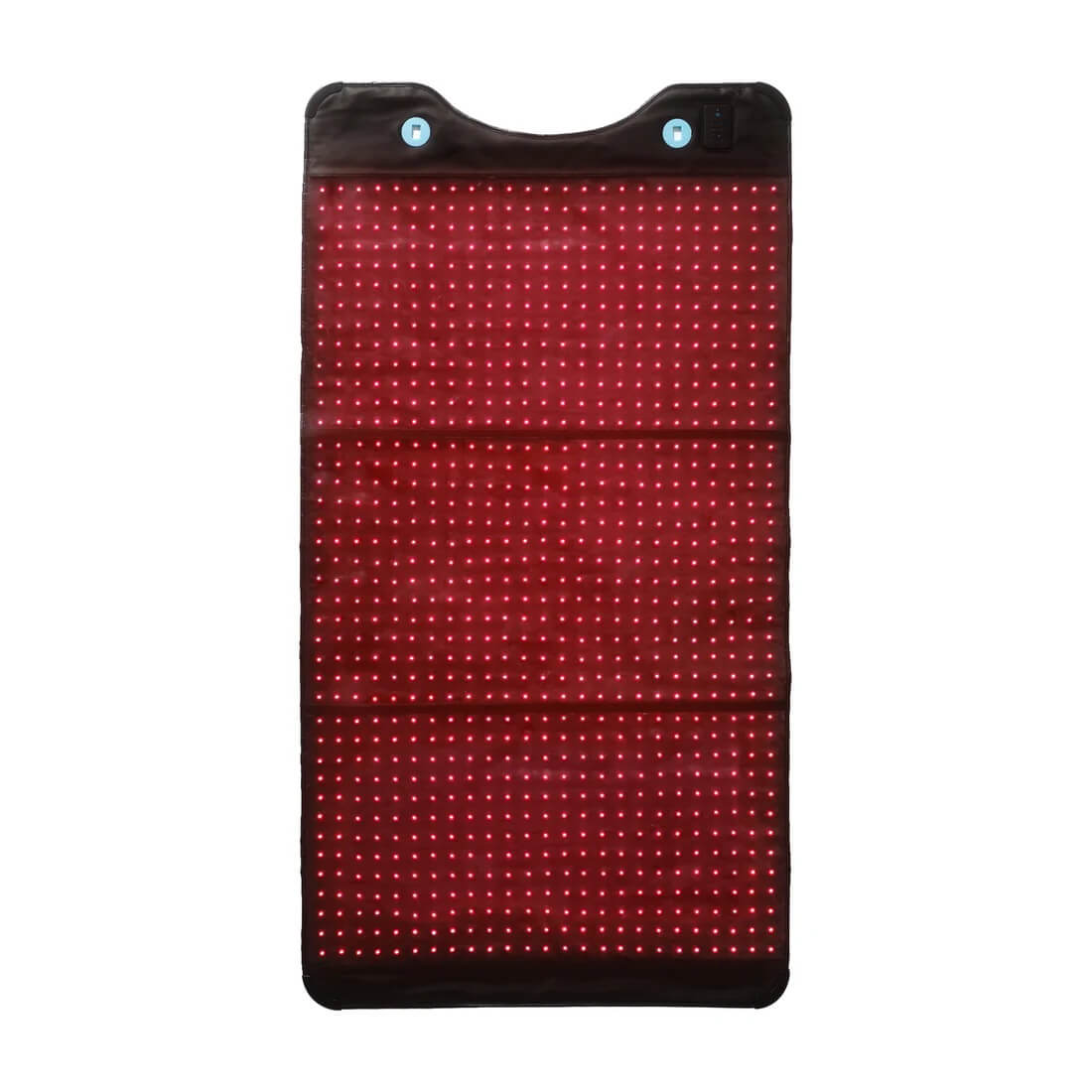
HigherDOSE Red Light Mat
⭐⭐⭐⭐⭐
Best for Relaxation
💲 Price Range: $1,100-$1,200
⭐ Best For: People who want to lay and relax during sessions
Great for overall facial lymphatic drainage. Uses 630nm red light and 830nm near-infrared with a higher power output compared to face masks.
The mat works for the full-body and can also be hung up so one can use this sitting or standing.
Pros: High power output, full body coverage, able to use in bed
Cons: One-size-fits-all design, not as convenient if you want to sit up or stand
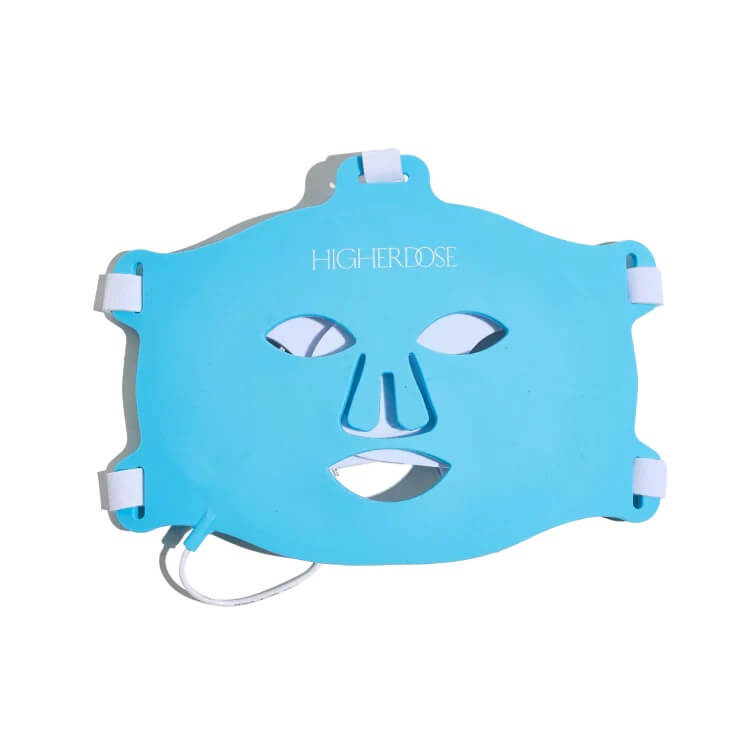
HigherDOSE Red Light Face Mask
⭐⭐⭐⭐⭐
Best For Face and Neck Targeted Treatment
💲 Price Range: $350-$400
⭐ Best For: People who want hands-free facial treatment, morning puffiness, facial swelling
Great for overall facial lymphatic drainage. Uses 630nm red light and 830nm near-infrared with one of the highest power outputs I’ve seen in face masks, which means better tissue penetration for lymphatic drainage.
The mask covers your whole face evenly and the build quality is solid. Perfect if you want something you can just put on and relax.
Pros: High power output, full face coverage, hands-free operation, solid construction
Cons: One-size-fits-all design, neck mask sold separately
Choose based on how you’ll actually use it—the best device is the one you’ll use consistently.
How to Use Red Light Therapy
Okay, so let’s talk about how to actually use these things.
Body Panels (Like the Joovv)
- How often: 3 to 5 times per week
- How long: 10 to 20 minutes per area
- Distance: Keep it about 10 to 20 centimeters away from your skin
- Best for: Limbs, abdomen, chest, back—any area with inflammation or swelling
For Face Devices:
- Frequency: 3-10 minutes daily
- Application: Face masks sit directly on skin, wands you move around targeted areas
- Best for: Facial puffiness, anti-aging, jawline congestion
Pro tip from a lymphatic specialist: Combine red light with gentle movement or lymphatic drainage for best results. Keep doing your other lymphatic care too—compression, exercise, hydration.
What to Realistically Expect
Red light therapy isn’t magic. It’s a tool that works best as part of a complete approach to lymphatic drainage and lymphatic health. Whether you’re managing lymphedema, lipedema, or just trying to support everyday health conditions, it works best when combined with other traditional treatments.
For lymphedema, you might see reduced swelling and improved tissue quality over weeks to months when we use it in the clinic. For general lymphatic support, think better circulation, less puffiness, and improved recovery. Research shows it helps, but it also shows someone has to be consistent for it to maintain and continue to be beneficial.
The key is consistency and combining it with the basics: move your body, stay hydrated, wear your compression (if prescribed), and take care of your skin.
I see patients all the time who expect red light to fix everything overnight. That’s not how this works. It’s supporting your lymphatic system, not replacing all the other things you need to do.
Is Red Light Therapy Safe?
Safety is one of the most common concerns I hear from patients—and rightfully so. When you’re adding something new to your routine, especially something like light therapy at home.
Red light therapy is generally safe, but check with your doctor first if you have:
- Active cancer or cancer history
- Are pregnant or trying to become pregnant
- Take medications that increase light sensitivity
- Have any implanted medical devices
Most side effects are mild:
- Temporary skin redness
- Eye irritation if used too close to eyes
- Fatigue if overused
To avoid these issues, follow manufacturer guidelines. Most home devices are meant for 10 to 20 minutes per session, 3 to 5 times per week.
If you’re using a red light therapy mask close to your eyes—make sure to wear protective goggles
The Good News
Most red light devices—especially those made for home use—are considered safe when used as directed. Because they use low power laser therapy or LED red light therapy, they don’t generate intense heat or cause tissue damage.
That said, just because a device is available over the counter doesn’t mean it’s safe for everyone.
About Medical Conditions and Devices
Some conditions red light therapy can support include chronic swelling, post-surgical inflammation, fibrotic tissue, and general lymphatic sluggishness. But these need to be approached on a case-by-case basis. If you have stage 2 or 3 lymphedema, lipedema, or deep fibrosis, home use might not be enough—you may need a clinical-grade device or a supervised plan involving low level laser therapy.
When You Need Clinical-Level Treatment
Some conditions really do need the deeper penetration and higher power of clinical low-level laser equipment.
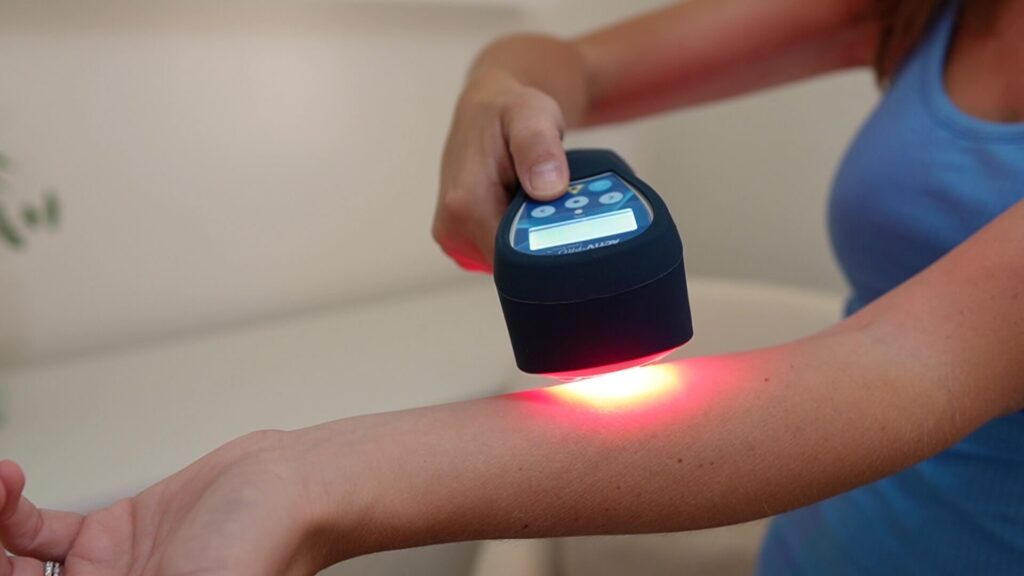
I often recommend in-clinic laser sessions when someone has:
- Post-surgical issues like axillary cording or dense scar tissue
- Deep tissue swelling that doesn’t respond to compression or home care
- Stage 2 or higher lymphedema with significant fibrosis or skin changes
- Limited mobility due to thickened tissue or surgical adhesions
- Or when someone’s been doing “all the right things” and still isn’t improving
If that sounds like your situation, it may be time to talk with your medical team or a certified lymphedema therapist about whether low level laser therapy could be the next step in your care plan.
The Bottom Line
Whether you’re managing lymphedema, dealing with everyday puffiness, or want to support your lymphatic health, red light therapy can be an effective tool when used correctly.
Key points to remember:
- Consistency matters more than expensive devices
- Use it as part of a complete lymphatic care plan
- Start with realistic expectations
- Always check with your doctor first
It’s not about having the most expensive device. It’s about using red light therapy consistently as part of a comprehensive approach to lymphatic health.
Frequently Asked Questions About Red Light Therapy for Lymphatic Health
I get these questions all the time in my clinic and online, so let me answer the most common ones:
Does red light therapy work for lymphedema?
Yes, but let me be clear about what “work” means. The research shows that 93% of breast cancer patients with lymphedema saw a 16-22% reduction in arm swelling using clinical red light therapy. That’s significant, but it’s not a cure.
Think of red light therapy as one tool in your lymphatic health toolkit. It helps improve lymphatic flow, supports skin conditions, and reduce inflammation, but you’ll still need to do the other things—compression, movement, proper skincare. I see patients who get frustrated because they expect red light to fix everything on its own, and that’s just not realistic.
How long does it take for red light therapy to work?
Most of my patients start noticing subtle changes around 2-4 weeks of consistent use—things like less morning puffiness or feeling like their arm or leg moves a bit easier. But real, measurable changes in swelling typically take 6-12 weeks of regular treatment.
The key word here is consistent. I’ve had patients use their device sporadically for months and wonder why nothing’s happening. Then they commit to 3-5 times per week for a few weeks and suddenly see the difference.
What’s the difference between red light therapy and infrared saunas?
Infrared saunas use far-infrared wavelengths that create heat and make you sweat. Red light therapy uses much shorter wavelengths (660-905nm) that penetrate tissue without creating significant heat.
Both can be relaxing, but they work completely differently in your body. Red light therapy targets cellular energy, improves skin health, and supports lymphatic vessels—especially when paired with movement. Infrared saunas work more through sweat and detox.
Can red light therapy help with lipedema?
Yes, it can help with the inflammation and discomfort that comes with lipedema, but it won’t change the fat distribution pattern. I see red light therapy as supportive care for lipedema—it may help with chronic pain, inflammation, and blood flow.
But let’s be realistic: lipedema is a complex condition that typically requires a comprehensive approach. Red light therapy is one piece of that puzzle.
Can I use red light therapy every day?
You can, but more isn’t always better. Most research shows benefits with 3-5 treatments per week. I have some patients who like daily use for 10-15 minutes, and others who prefer longer sessions (20 minutes) less frequently.
Listen to your body. If you’re feeling overstimulated or notice your skin getting irritated, back off the frequency.
Do I still need compression if I’m using red light therapy?
Yes! Red light therapy helps improve lymphatic flow, but compression provides the external pressure that keeps fluid from accumulating again. Think of red light as helping your lymphatic system work better, and compression as supporting that work throughout the day.
I’ve never had a patient with lymphedema successfully manage their condition with low level laser therapy or red light therapy alone. It’s always part of a comprehensive approach.

